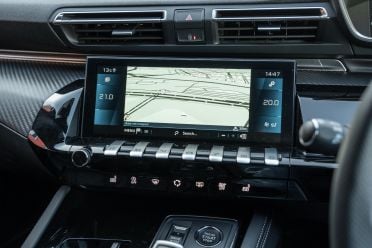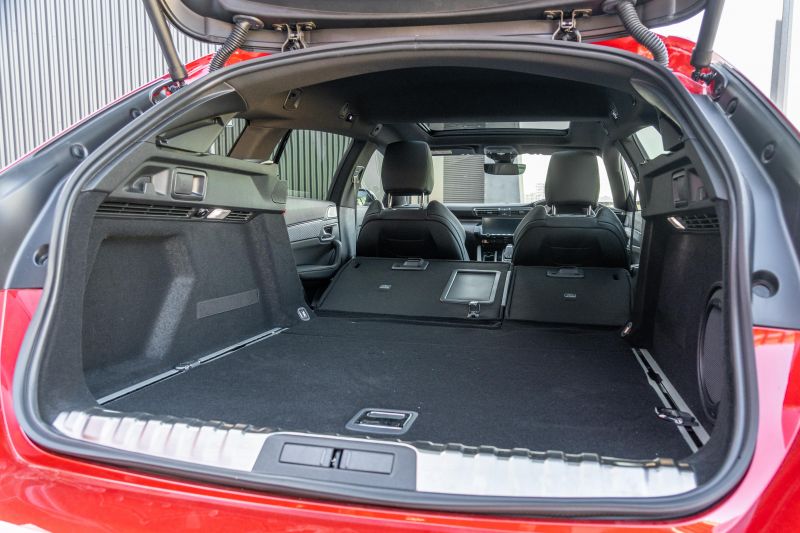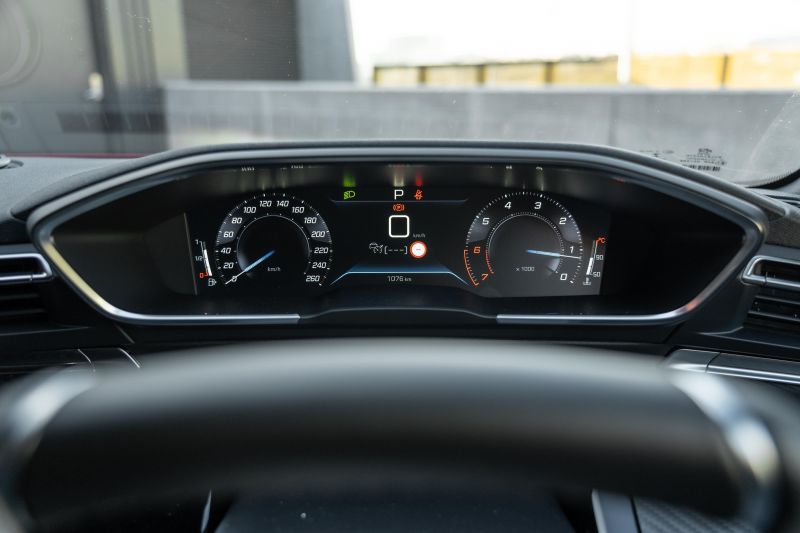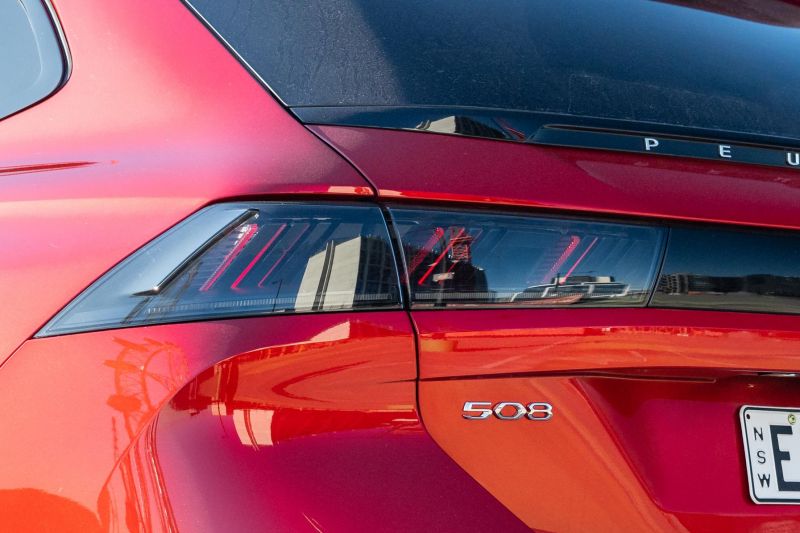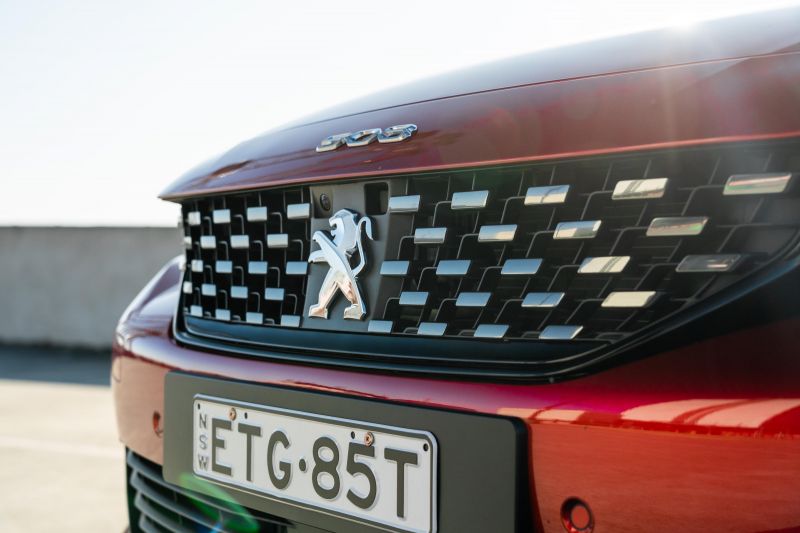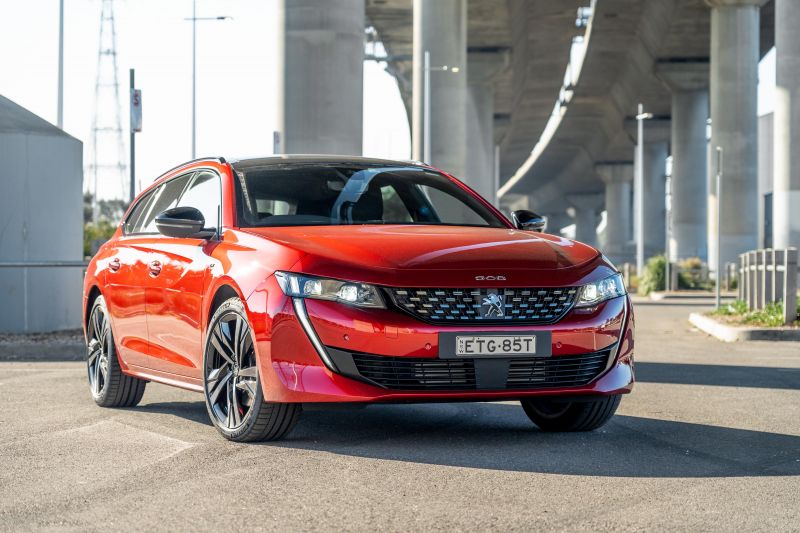The wagon is dead, long live the wagon!
SUVs are now the dominant body style for anyone who wants to haul a family around, which has allowed carmakers to turn their boxy station wagons for the masses into slinky style statements for people who want to stand out from the crowd.
Few are slinkier than the Peugeot 508 Sportswagon. It sits alongside the similarly sexy liftback in the range, and takes on everything from the Audi A4 Avant and BMW 3 Series Touring to the Volkswagen Arteon Shooting Brake
Does this French load lugger have the substance to back up its considerable style?
How much does the Peugeot 508 GT Sportswagon cost?
Pricing for the 508 range kicks off at $63,431 before on-roads for the liftback, and extends to $81,610 for the flagship GT plug-in hybrid model.
Our GT Sportswagon on test has a sticker of $65,657 before on-road costs. The opening panoramic glass sunroof on our tester added $2500 to the sticker price, while the Elixir Red Metallic paint is an extra $1050.
Wagons might represent a small part of the new car market, but the 508 SW actually takes on a few strong competitors.
The Volvo V60 Cross Country might have a raised ride, but its wagon body and $64,990 sticker make it a natural rival. The 508 also takes on the 3 Series ($87,300) and A4 ($76,000) wagons, and the larger Volkswagen Arteon Shooting Brake ($63,740 to $70,740).
What is the Peugeot 508 GT Sportswagon like on the inside?
You won’t mistake the 508 for anything but a Peugeot.
It has an interesting, lavish interior that wouldn’t feel out of place in something significantly more expensive. All the materials are high-end, and it looks unlike anything BMW, Mercedes-Benz, or Audi has turned out lately. It’s not without its quirks, though.
Trimmed in Nappa leather, the front seats are pretty to look at and great to sit on during long drives, with plenty of under-thigh support and bolstering. Not only are they heated, they’re massaging.
Technology has traditionally been a weak spot for Peugeot, and the 508 doesn’t do anything to change that. The 10.0-inch infotainment screen is neatly integrated into the dashboard, and is supported by a minimalist row of piano-style keys on the wing-shaped dashboard.
It looks pretty, but is slower to respond and trickier to navigate than what’s on offer in mainstream rivals, let alone cars in the premium world. The graphics are basic, and the claim it’s a 10.0-inch screen are misleading because the outer edges of the display are blocked out for climate control.
Pressing the climate control displays on the outside of the screen don’t allow you to change the temperature, though. There are too many menu layers, and jumping between them is slower than it should be in the smartphone age.
Peugeot’s reversing camera is grainy, and its surround-view camera isn’t a patch on what rival brands offer.
The high-set 12.3-inch driver display is very pretty, and offers a range of useful layouts. It’s a distinctly Peugeot take on the formula laid down by the Volkswagen Group, and is the tech highlight of the cabin.
As for the iCockpit driving position? It works for me, but not everyone likes the tiny low-set steering wheel and high instruments. They’re definitely worth trying before you buy.
Storage space around the cabin is generally good. The central storage space is massive, and is housed beneath a Mercedes-style bi-fold armrest, and there’s a wireless phone charger hidden beneath the rising centre console.
The dual cupholders and door pockets are good, the absolutely tiny glovebox less so. It’s time Peugeot and Citroen started taking right-hand drive seriously by moving the fuse box from left-to-right.
Rear seat space is pretty good in the 508, despite its sloping roofline and pinched windows.
Getting in through the doors (with their pretty frameless windows) is a bit of a squeeze, but once you’re in there’s enough headroom to house tall teenagers thanks to a scalloped-out roof lining.
Legroom is acceptable back there behind average-sized drivers, but the Arteon Shooting Brake will house taller people in more comfort.
As is the case in style-focused rivals, the Peugeot features a rising belt line that makes it harder for short passengers to see out.
There are air vents, a fold-down central armrest, and dual USB ports back there.
Boot space is a claimed 530 litres with the rear seats in place, and expands to 1780L with them folded. You also get rails back there with moveable tie-down hooks.
There’s a space saver spare wheel beneath the floor.
What’s under the bonnet?
Power in the Peugeot 508 comes from a 1.6-litre turbocharged petrol engine, hooked up to the front wheels exclusively.
It makes 165kW of power and 300Nm of torque, and an eight-speed automatic transmission is standard. The 100km/h sprint takes a claimed 8.2 seconds, and flat out you’ll be doing 250km/h according to Peugeot.
Claimed fuel economy is 6.3 litres per 100km on the combined cycle; we saw 8.2L/100km on a week skewed to driving in the city.
The fuel tank holds 62 litres, and the engine required 95 RON premium unleaded.
How does the Peugeot 508 GT Sportswagon drive?
The 508 might look unique, but it’s built using the same bits and pieces featured in the 3008 and 5008 SUVs.
The 1.6-litre turbocharged engine features elsewhere in the range, as does the transmission, so there aren’t too many surprises to be found behind the wheel.
Despite its small displacement, the engine in the 508 doesn’t feel undercooked. Part of that’s down to the fact it weighs just 1395kg (a BMW 330i Touring tips the scales at 1538kg), and part of it is down to the fact it’s a torquey little engine.
The eight-speed automatic transmission is smooth and smart at low speeds, and the engine delivers its punch just off idle, so you’re able to point and shoot between the lights without feeling like you’re lacking under the bonnet.
It runs out smoothly to its redline and makes a decent noise while doing it… but never feels fast, or like there’s much performance in reserve. It has enough punch when you have one or two passengers, but a fully-loaded car might have it straining.
Where a BMW 330i or Arteon with their 2.0-litre engines don’t feel short of performance when you’re overtaking, the 508 feels as if it’s working just that little bit harder. Instead, it feels more at home in the city.
The tiny wheel is hooked up to steering that, at low speeds, feels video game light.
You’re able to flick into tight parking spots with ease, and you rarely need to move your hands from 9 and 3 o’clock thanks to the quick rack.
Over-the-shoulder vision is average because of the pinched windowline, but the blind-spot lights and parking sensors make what’s actually quite a big car easy to place in tight spaces.
Ride quality is better than it has any right to be on 19-inch alloy wheels. Occasionally the 508 slaps into an expansion joint, but for the most part it just soaks up what the road throws at it like you’d expect of a luxurious, large wagon.
Because of its skimpy kerb weight, the comfortable ride doesn’t translate into a car that feels like a barge.
It’s still relatively light on its feet, and body roll is well controlled when you sling the 508 into a corner. The only real hint about its comfort-first setup is over crests on the highway, where it can take a moment to settle.
At 100km/h the big Peugeot is a relaxed companion. Its adaptive cruise control system is smooth and smart, and the lane-centring assist keeps you between the white lines without feeling too hands-on.
Wind and road noise are well suppressed, even given the frameless windows, although in typical European fashion there’s a bit of tyre roar on coarse-chip roads.
What do you get?
508 GT Sportswagon highlights:
- 19-inch alloy wheels
- Adaptive suspension
- LED headlights (dusk sensing)
- LED daytime running lights
- LED tail lights
- 12.3-inch ‘i-Cockpit’ digital instrument cluster
- 10.0-inch touchscreen infotainment system
- Satellite navigation
- Apple CarPlay/Android Auto (wired)
- Rain-sensing wipers
- Auto-dimming electrochromatic side mirrors
- Auto-dimming electrochromatic rear-view mirror
- 10-speaker Focal sound system
- Perforated leather steering wheel
- Nappa leather upholstery
- Heated front seats with massage function
- Electric front seat adjustment with memory
- Electric sunroof
- Wide-angle front and rear cameras
- LED interior lighting
- Rear privacy glass
- Hands-free tailgate
- Park Assist
Is the Peugeot 508 GT Sportswagon safe?
The Peugeot 508 has a five-star ANCAP safety rating, based on tests carried out by Euro NCAP in 2018.
It scored 96 per cent for adult occupant protection, 87 per cent for child occupant protection, 71 per cent for vulnerable road user protection and 76 per cent for safety assist.
Standard safety features include:
- AEB with pedestrian/cyclist detection
- Lane departure warning
- Lane-keep assist
- Blind-spot assist
- Adaptive cruise control with stop/go
- Highway Positioning Assist (lane centring)
- Auto high-beam
- Driver attention warning
- Speed sign recognition
How much does the Peugeot 508 GT Sportswagon cost to run?
The Peugeot 508 is backed by a five-year, unlimited-kilometre warranty.
Maintenance is required every 12 months or 20,000 kilometres, and the first five services will set you back a combined $3380 using Peugeot’s capped-price service program.
CarExpert’s Take on the Peugeot 508 GT Sportswagon
Between its badge and body style, the 508 SW is always going to be a niche player in Australia. In a lot of ways that’s a shame.
Not only is it great to look at outside, it’s beautifully appointed inside, and drives with a level of refinement you’d expect of more expensive European cars.
It still requires owners to make some compromises. The infotainment system and cameras undermine the premium, almost lavish, feeling on offer in the rest of the car, and servicing is expensive.
But there’s no doubt the 508 SW has the substance to match its considerable style.
Click an image to view the full gallery.
MORE: Everything Peugeot 508














